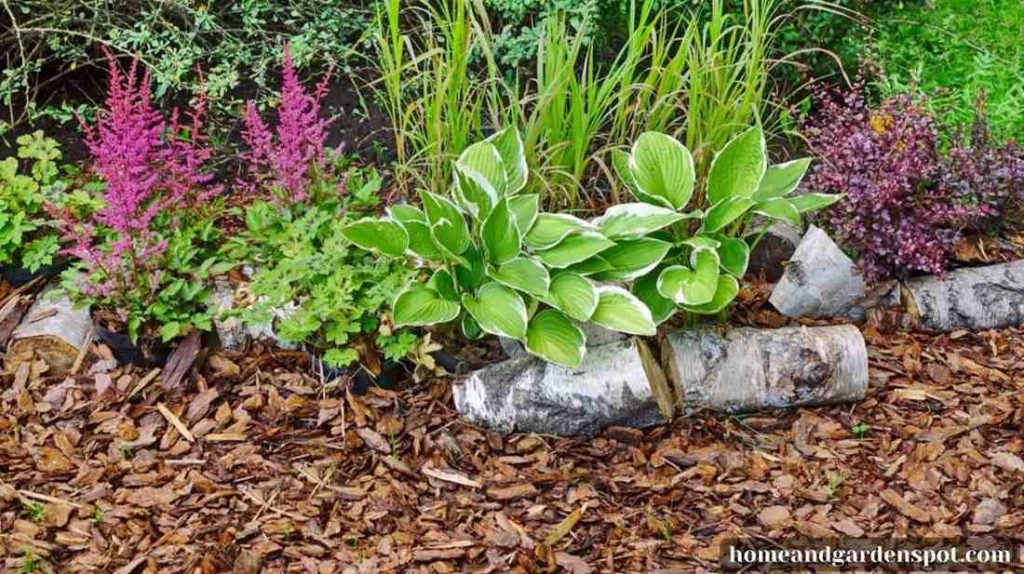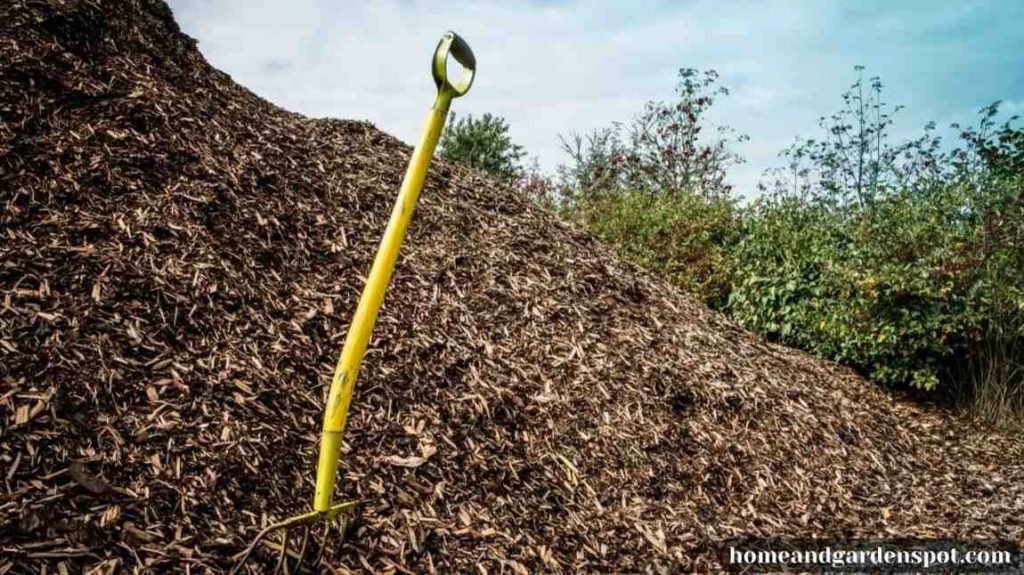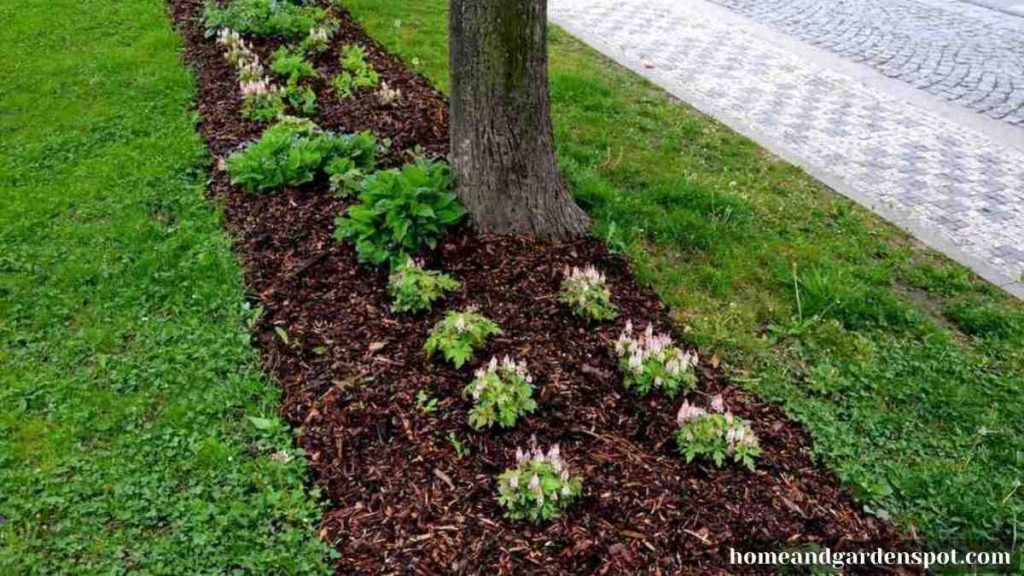Gardeners and Landscapers know the obvious benefits of mulch to a vibrant and healthy landscape. Mulching retains moisture, suppresses weeds, moderates soil temperature, and enhances the visual appeal of gardens and flowerbeds. However, as seasons change and landscapes evolve, the time eventually comes to address the question: What should be done with old mulch? The prudent management of old mulch is essential for maintaining your plants’ health and minimizing waste and environmental impact.
In this blog post, I will discuss handling old mulch and provide creative ideas for dealing with it. Additionally, I will discuss what you can do with old mulch.
Is Old Mulch Still Good to Use?
Yes, old mulch can still be useful for your garden. Mulching in the fall protects empty vegetable and flower beds from winter weather. This safeguard ensures that the fertility you’ve diligently nurtured in your garden soil remains intact despite winter’s challenges. Shielding your soil from gusty winds and heavy rains prevents any precious nutrients from being washed away. Knowing and having the right tools to spread mulch makes it even easier.
If the old mulch hasn’t decomposed much by spring, you can still use it. Its ability to continue safeguarding the soil and preserving its richness underscores the durability of well-applied mulch.

How to Determine If Old Mulch Can Be Reused
Determining whether your old mulch can be reused is crucial in sustainable gardening. Follow these guidelines to evaluate its condition and decide whether it’s suitable for reapplication:
1. Texture Check
Scoop up a handful of the old mulch and observe its texture. Has it crumbled into fine particles, losing its distinct mulch-like appearance? If so, it has likely broken down too extensively to serve as mulch effectively. This indicates that it might be time to replace it with fresh mulch.
2. Original Appearance
Examine the mulch closely. Does it still retain the appearance it had when initially applied? If the mulch maintains its original look and feel, it is a positive sign that it could be reused.
However, there are exceptions to consider:
- Disease Issues
If your plants experienced diseases attributed to the old mulch in the previous season, it’s advisable to discard the mulch. It’s best to start with fresh mulch to prevent potential disease recurrence.
- Contaminants
If you suspect the mulch might have been exposed to harmful chemicals, such as pesticides or herbicides, it’s safer to exercise caution and not reuse it.
Special Note on Disease:
If there are disease problems, consult with local authorities to determine the appropriate disposal method for the old mulch. Some civic bodies have specific guidelines for disposing of potentially polluted garden materials.
What to Do With Old Mulch?
1. Loosen or Turn Over Old Mulch
The simplest approach to reusing old mulch involves loosening or turning it over. This method is especially useful if the mulch has formed a crust, impeding water penetration. Loosening the mulch with a rake prevents water repellency and facilitates better moisture distribution. If the existing mulch layer hasn’t significantly decomposed, adding a new layer on top can refresh it.
2. Mix Old Mulch Into the Soil
When old mulch decomposes, you can mix it into the soil to accelerate decay. This method contributes organic matter and nutrients to the soil, enriching it for future plant growth. However, exercise caution with certain mulch types like sawdust, as they may temporarily tie up nitrogen, hindering plant growth. You can repurpose sawdust for animal bedding, weed suppression, or as a composting material. It might interest you to know that you can even repurpose dog hair as a composting material!
3. Add Old Mulch to Compost
Repurposing old mulch for composting requires effort, but it’s a valuable approach. To accomplish this, first collect the old mulch. Next, ensure that the mulch is environmentally safe and free from any harmful substances.
Finally, place the mulch in your compost heap. This method promotes decay and transforms the old mulch into nutrient-rich compost to enhance your garden’s vitality.
4. Reuse Old Mulch Elsewhere
If your old mulch remains relatively intact, consider reusing it in different areas of your landscape. Reuse is particularly feasible for wood mulch that has yet to decompose. For instance, you can use wood mulch where you want plants to grow. It will break down and make the soil better.
What to Do With Old Dyed Mulch?
When you no longer need old colored mulch in your garden, you can reuse and recycle it in different ways. One option is to refresh and reuse it by adding a fresh layer of dyed mulch on top. This can save you money and extend the life of the mulch.
If the old dyed mulch consists of natural materials like wood chips, consider composting it in another way. However, be cautious about composting if the mulch contains any chemicals or dyes that might not suit the compost pile. You can use it to stop weeds in your garden or non-growing areas. This helps to prevent weed growth and conserve water in the soil.
Donating excess mulch to community gardens or neighbors in need is another eco-friendly option. If none of these options are effective, you should reach out to your local waste management or recycling center. They will be able to assist you in properly disposing of it.
Before using mulch again or putting it in compost, always check for harmful substances. This is important to protect both plants and the environment.

How to Use Old Mulch For Gardening
1. Faded mulch only needs replacement if it’s still structurally sound. Gently rake through it to revive its appearance. Adding a fresh inch of mulch atop the existing layer instantly restores your landscape’s allure.
2. Crumbly, organic mulch resembling potting soil is a treasure trove. Tilling it into the ground boosts nutrient levels and balances moisture. Decomposed mulch’s micronutrients and moisture management properties enhance plant development and soil stability.
3. Transform old mulch into natural pathways that are kinder to the eye than concrete. Besides offering a drier post-rain experience, mulch pathways visually guide your terrain.
4. Don’t discard old mulch; compost it! Recycling the organic matter into nutrient-rich material benefits the growth of your garden. Merging larger wood chunks requires extra time, but the payoff is worth it.
5. Bagged old mulch safeguards plant roots from freezing temperatures. A 4-5 inches layer shields dormant plants, acting as a cozy blanket and eventually nourishing soil as it breaks down.
6. Encircle your trees with old mulch to enhance their health. Gradual nutrient release, moisture retention, and microbial attraction foster robust growth. This method also moderates soil temperature fluctuations.
7. Place old mulch between rows to tame weeds and minimize mud during planting seasons. It disintegrates over time, fortifying soil with nutrients and welcoming beneficial microbes.
8. Combat soil erosion with old inorganic mulch, working it into the ground or layering it. As a stable surface, it defies rainstorms and winds. Inorganic mulch can also grace pathways for a long-lasting functional touch.
9. Elevate your potted plant game by placing inorganic mulch at the base or as soil filler. Enhanced drainage and stability make it a clever addition to container gardening.

Tips for Reusing Old Mulch
1. Disease-Free Foundation
Steer clear of reusing mulch from plants that battled fungal diseases like root rot or wilt disease. Preventing the spread of such ailments is paramount for a thriving garden.
2. Optimal Thickness
Remember that improper mulching can unknowingly facilitate plant disease spread. Maintain a standard mulch thickness to avert contact between leaves, fruits, and soil, curbing the risk of disease transmission.
3. Rekindle the Color
Though faded, old mulch still holds value. Employ a mulch renovator to revitalize its hue, infusing new life into your garden beds.
4. Protect Surfaces
When stowing away dyed mulch, guard concrete pavements from staining by placing it on a tarp. This simple step ensures your garden restoration doesn’t mar other surfaces.
5. Pest-Free Environment
Old mulch can harbor pests like larvae, poised to survive winter. If your garden faces infestations, it’s prudent to bid farewell to the old mulch, preventing future complications.
6. Soil Breathing Space
During soil preparation, rake the old mulch to allow the soil to breathe and water to infiltrate the topsoil. This practice reduces your reliance on fresh mulch in the upcoming growing season.
7. Mindful Tree Mulching
Caution rules when mulching around trees and saplings. Avoid the suffocating “volcano mulching” that harms their growth; nurture their well-being by opting for a more balanced mulching technique.
8. Break the Barrier
Don’t layer new mulch atop a compacted old layer. Employ a rake to loosen the existing mulch, paving the way for enhanced soil aeration.
9. Turn and Prevent Molds
Months down the line, turn the mulch to prevent the formation of compacted layers and mold. This simple step encourages soil health and curbs mold increase.
Conclusion
You usually do not need to remove old mulch and can often leave it undisturbed. You should remove it if fungi infect it or if the surrounding plants are diseased. Check the mulch to make sure it’s working and not suffocating your plants by blocking air and water.
Temporarily move aside the old mulch if it hasn’t decomposed much and you can reuse it, to prepare the planting bed. Put compost in the vegetable garden or flower bed, and mix it into the soil with a spade. When you mix the compost into the garden, you will bury the old mulch. Therefore, you will need to get new mulch and use it.

Leave a Reply